We are Barbie ghouls in a Barbie world
The 30th week of one queer and very pink thing we’ve been up to and into.
I just knew that I didn’t want any man telling me who I could be or what I could be or what to sound like. I came from a patriarchal country where I’m being told everything I can and can’t do because I’m a girl. I figured, well, if I didn’t take it from the system and I didn’t take it from my daddy, I ain’t taking it from anybody else. ~Shuhada’ Sadaqat (Sinéad O’Connor), in Nothing Compares (2022)
Barbie, directed and co-written by Greta Gerwig, is a rare cultural moment because, regardless of political or social affiliations, everyone and their grandmother seems to be talking about Barbie—whether they love or hate or refuse to see the film. It’s not often anymore that a media product truly reaches the masses (since we live in an age of siloed media curation). So, yes, we saw it opening night at our small city cinema with a bunch of teens, a few families, and a handful of hetero-presenting couples. Yes, we saw it a second time at a weekday matinee. And, yes, we really enjoyed it and would definitely recommend seeing it. Yes, AND, it’s complicated.
There is a lot of nuance1 missing in media criticism, especially as more people—both conservative and progressive—relish polemics. We live in an age in which subtlety is all too often forgotten; we tend not to have conversations in which there are slight differences in opinions or perceptions. Instead, we have ideological canyons that can make conversations contentious or alignments impossible. But taking time to make nuanced readings means that we can hold multiple things as true. It means we can appreciate this weird, fun, campy feminist summer movie AND we can understand its shortcomings. We want to be able to critique what Barbie doesn’t do, while also acknowledging what Barbie has done. We are here to say: YES, AND.
Nuance means we can appreciate how Gerwig’s Barbie playfully pokes at many of the ills of our patriarchal society, including cishet gender roles, through a white feminist lens, while we acknowledge the fact that it does not meaningfully critique capitalism nor represent intersectional feminism. Indeed, Barbie the doll and Barbie the movie fully exist in a capitalist world, a major driving force behind poverty, racism, patriarchy, and ableism—capitalism is Barbie’s reason for existing and also is our society’s current ruling force.
Barbie the movie does not reckon with class (who can even afford to have Barbies in the first place, as one tiny piece of that conversation), race (yet again a slender blonde white woman is the protagonist and face of feminism), ableism (women in the Barbie world are told they can “do” anything and, in fact, have to do everything), or any notions of embodiment beyond the gender binary or any textual sexuality that isn’t heteronormative (no, Weird Barbie, neutered Allan, and Sugar Daddy Ken are not nearly enough—despite being delightful, they are too subtextual considering this is our year of twenty twenty-three).
Gerwig’s Barbie does reckon with some of what it means to be a woman in our patriarchal world. Barbie has an in-your-face feminist message that is naming patriarchy and the false constructed notions of it. America Ferrera’s Gloria deprograms the Barbies from newly (and poorly) introduced patriarchy by naming and detailing some of the complex, competing, and crushing pressures women face. Gerwig’s Barbie doesn’t just name patriarchy, but makes fun of it, which is a feat considering being laughed at is a thing men deeply fear—as Margaret Atwood noted and others have reiterated: “Men are afraid women will laugh at them. Women are afraid men will kill them.” All together, this is a form of progress slipped into a digestible (for some) pink liquid.
While this story is, expectedly, told about and by a white woman, the Barbie world emphasizes that all the women—yes, including trans and Black and queer and fat and Brown and disabled women—are Barbies. Is it good for people to see a Black woman (Issa Rae) as President?2 Yes. And is it time to see a joyful campy smart forward-reaching Barbie story by/for/from a Black woman’s perspective (among countless others)? Yes.
While Stereotypical Barbie’s story is the expected place to start, we feel sure the Barbie world knows there are many more Barbies’ stories to tell. Like we discussed about Bros, not everything can accomplish all of our needed agenda items at all times. It is unfair to ask one writer/director and one very unabashedly capitalist endeavor to address all of our societal ills. Barbie isn’t a film to change the world for all the marginalized, but it is a movie that can plant seeds of dissent into some minds that need it. And there are minds who still need to be made aware of patriarchal subjugation, while others need the cathartic release (laughter is the best medicine) that comes from watching that which subjugates them be deliciously satirized.
As the brilliant Audre Lorde said long ago, “the master’s tools will never dismantle the master’s house”... Barbie is a film that is fully made with the white capitalist patriarchy’s tools, AND at least Gerwig and team seem to be saying: “Hey, look at these tools. They only do certain things. Maybe we should name them and what they do (and why) so people can better understand what we are working with.” And, then, maybe other people will bring new tools to the party that will dismantle this damn house.
There is a chasm, a grand canyon, between where we are and where we need to be, including what we understand and how we think, which is deeply seeded and systematically reinforced. This gulf is deeply disappointing and infinitely infuriating (and repeatedly damaging) to Black, Indigenous, and other People of Color, as well as LGBTQ+ and disabled people. Period. Full stop. Yes, AND, we have to build a bridge and we have to reach people where they are, even if incrementally and imperfectly.3 It’s annoying and exhausting. But, if the Barbie movie is one of the trusses in a bridge we need to, uh, bridge the gap, it’s certainly a funny, glossy, pretty ‘n pink one.
Relatedly, our dear friend Anthony Hudson, writer and performer extraordinaire, recently wrote:
“Barbie is a shocking and incredible achievement. It is both a giant commercial for Mattel AND an instance of Greta Gerwig weaponizing a corporate mega-brand to bring feminism and anti-patriarchal satire, at its most accessible and relatable, to audiences across the world. Gerwig demonstrates, in terms children can understand, the injustices of our world by playing them back at us with dolls. Not just any doll, but Barbie: a doll historically and culturally ingrained in our understanding of gender and the capitalism that produces it. This Barbie is punk (pink?) rock.”
Barbie is, indeed, a satirical tour de force in which Gerwig and team use every technique of satire (reversal, parody, incongruity, and exaggeration) to simultaneously highlight the constructed nature of how we organize societies and to show and tell an experience of being subjugated by patriarchal oppression. As one of those “reversals,” the Barbies have created and live in a world by and for women. Barbie isn’t defined by or in relation to Ken, and this film emphasizes patriarchy’s flaws as it tells men they need to find another way to be that isn’t in control of (or served by) women or in conflict with other men.
In fact, this movie extends the Barbie doll’s ability to mean and reflect different things about how our society sees women. Her creator, Ruth Handler, insisted on keeping Barbie childfree and unmarried, free from typical gendered burdens the patriarchy puts on women, so she could represent women being something other than a mother and a wife (which was important to establish in 1959 America). Barbie, in fact, was created before Ken, which is an undoing of the hierarchical Christian creation myth. The self-aware Barbie film takes this legacy and channels it into a simple message: how society has been isn’t how it should be.
When we saw Barbie on opening night, a little kid no older than 10 walked by us with their parents as the credits rolled. They grabbed their parents’ hands and enthusiastically exclaimed with mini hops: “Best.Movie.Ever.” While Barbie isn’t telling the two of us something we don’t know nor changing our lives, it can change how a child or young adult sees the world, help them see the artificiality of all the systems we construct, and, in turn, change how they see themself. That gives us hope for a better, more inclusive and equitable future.
Barbie is all that in a love letter to cinema, one that has gorgeous practical effects, spot-on performances (Margot Robbie is truly stellar), epic production design, joyous dance numbers, and a boppin’ soundtrack—including a queer staple. Gerwig didn’t feature an 1989 Indigo Girls song just to give our lesbian icons a check (although that’s great too!). Gerwig lets us know that she knows that her Barbie isn’t the be all, end all answer. The lyrics to ‘Closer to Fine’ remind us that:
There’s more than one answer to these questions Pointing me in a crooked line And the less I seek my source for some definitive Closer I am to fine
There are a lot of answers, not just one definitive truth. And, with Barbie, we are a little bit closer to fine.
Stacey Abrams 2024
We are fully open to the possibility that someone knows of or will imagine a better way across than a bridge. We are of the mindset that we should be open to that at the same time we keep building a bridge. It’s like voting, which isn’t going to fix the broken system and also is a way for some people to input into the current, flawed system.

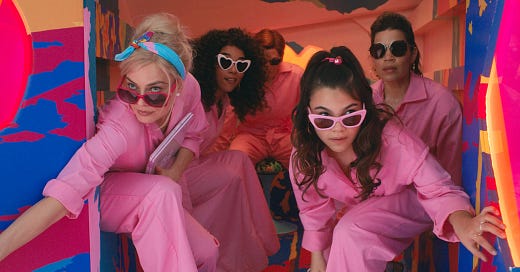

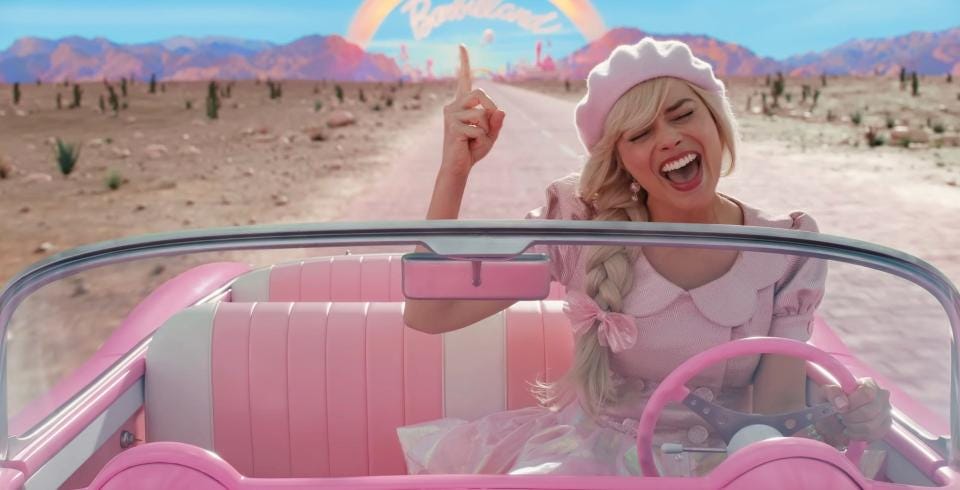
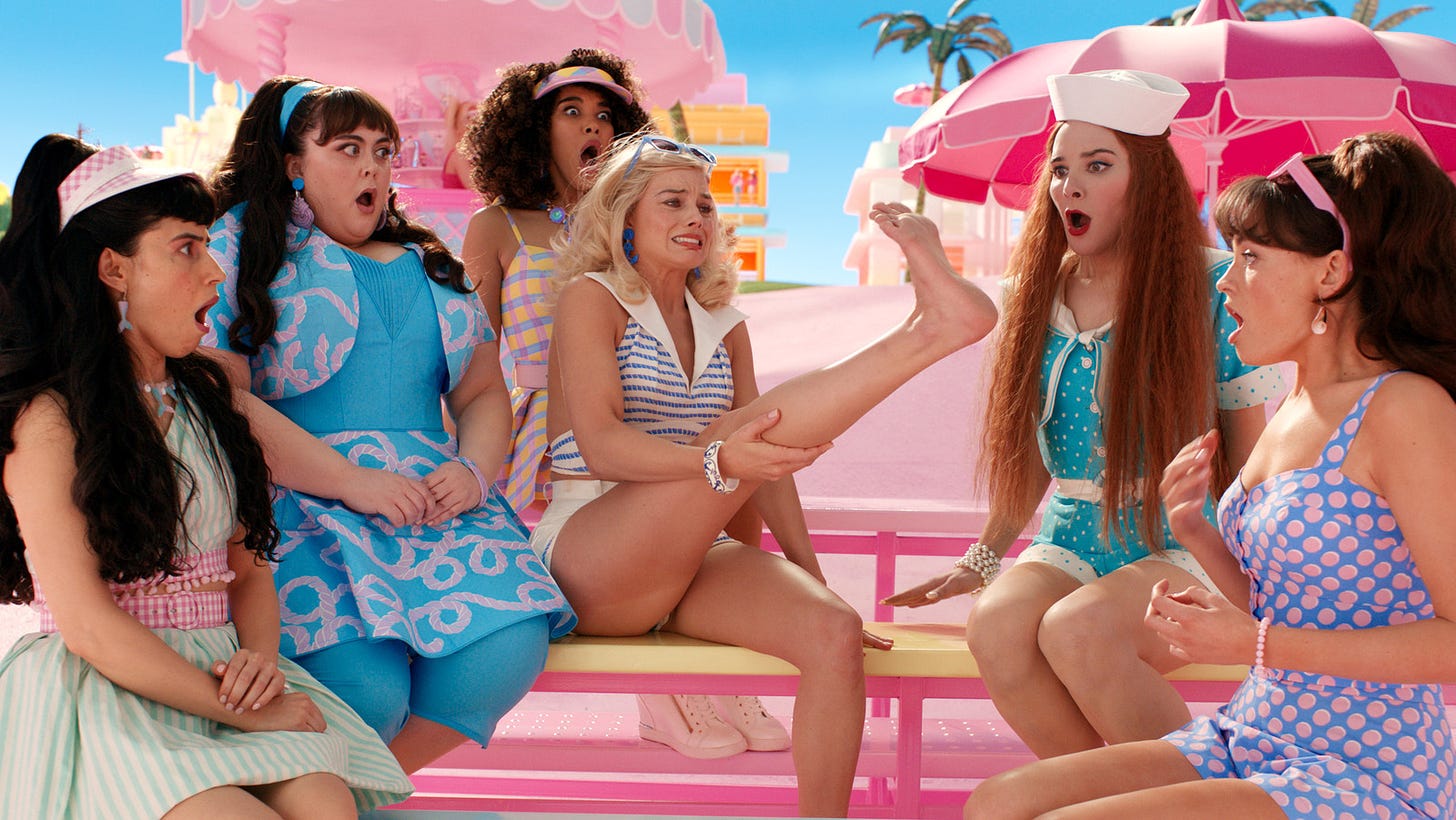

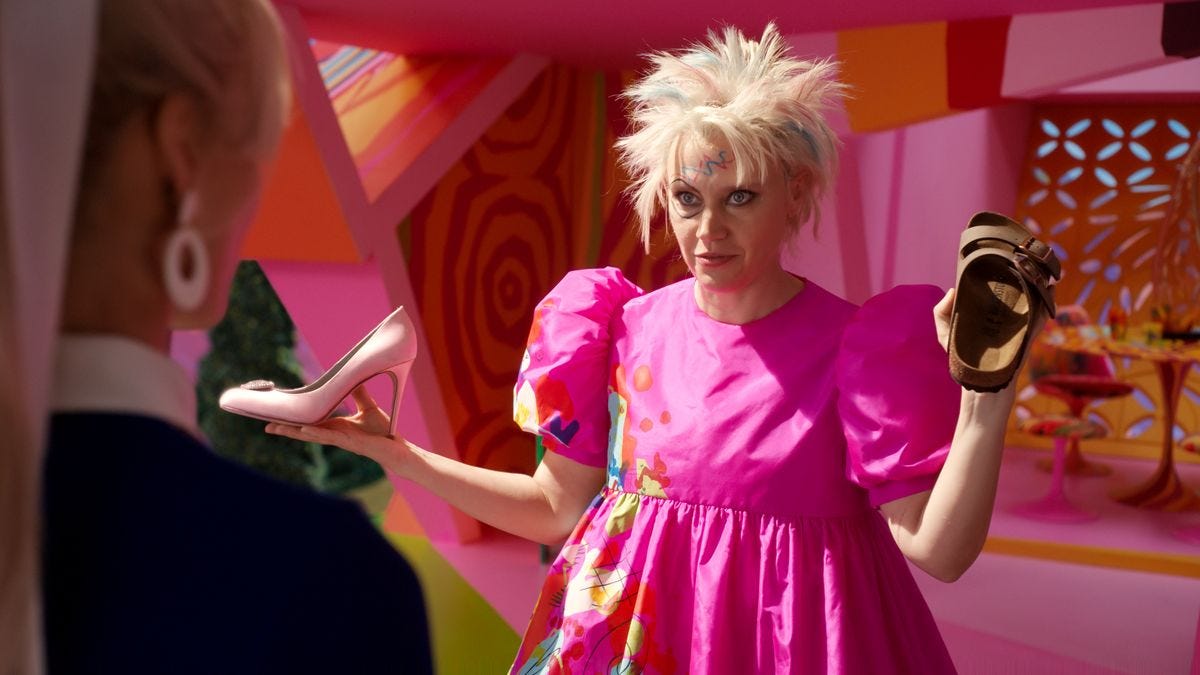
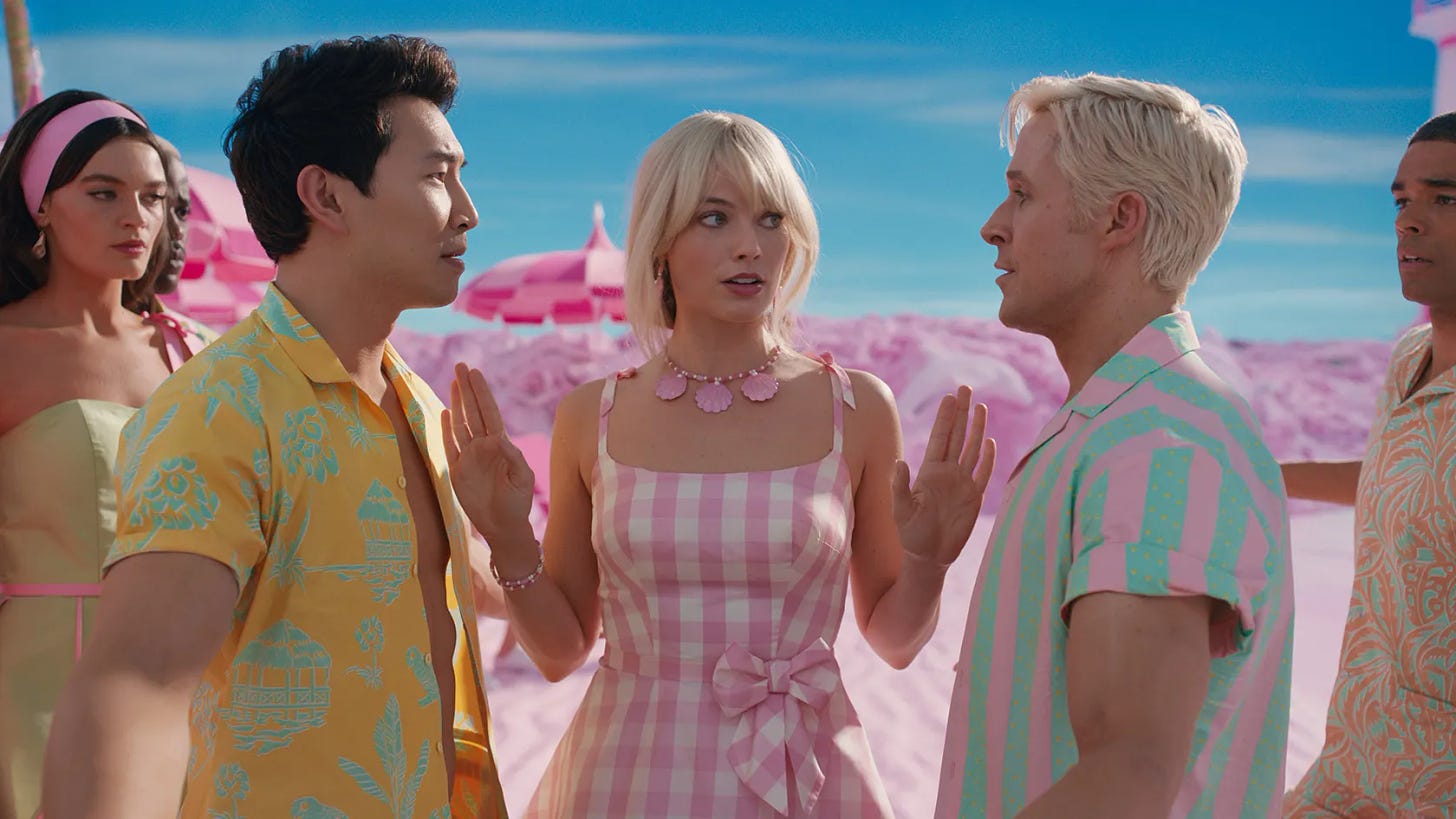

Yes, AND is absolutely correct. Love your anecdote about the kid’s reaction after the viewing. It’s one of the best things about film, the seeds it drops into these impressionable minds (bwaa-haaa-haaa)!